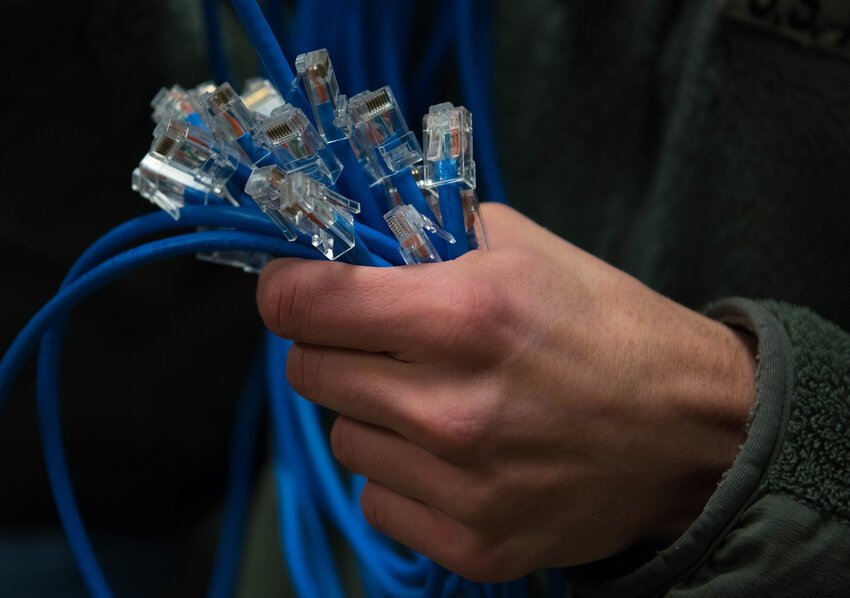By Sydney Carruth | Cronkite News
WASHINGTON – Arizona will get just under $1 billion in federal funding to improve high-speed internet access, part of more than $42.45 billion announced Monday by the Commerce Department.
A $993.1 million share of Arizona’s Broadband Equity, Access, and Deployment (BEAD) program will be managed by the Arizona Department of Commerce, which Governor Katie Hobbs calls a “historic broadband investment.” I’ve been planning how to distribute things since December.
“Reliable internet access is essential to creating equal opportunities for all Arizonans,” Hobbs said. in the statement Monday. “For too long, millions of Arizonans have been denied access like this – high-paying jobs, quality education, and even basic health care services. .”
Funded through the $1 Trillion Bipartisan Infrastructure Act passed in 2021, the program is specifically focused on promoting rural broadband connectivity. All states will receive at least $100 million, and all territories will receive at least $25 million, in states or territories of U.S. locations with unserved broadband and high-cost unserved locations. Additional funding was provided on a percentage basis.
Texas has the most at $3.3 billion, followed by California at $1.9 billion. Delaware had the lowest of the states, at $107.7 million. Territory funding ranged from her $107 million in the District of Columbia to her $27.1 million in the U.S. Virgin Islands.
Assistant Secretary of Commerce Alan Davidson said at a White House event, “States can confidently plan Internet access grant programs and work with communities to ensure this money goes where it’s needed most.” It happened,” he said. Announcing funding.
Except in the most severe areas, states and territories are required to provide a 25% matching amount for BEAD funds used. Arizona’s fiscal 2024 budget includes her $23 million in the Local Broadband Acceleration Matching Fund, which helps local governments match.
The Arizona Department of Commerce was not immediately available for comment on Monday. But the agency said on its website that it plans to integrate the BEAD fund into its current digital equity plan, which aims to ensure communities have the technical capacity and skills to participate in the digital environment.
Arizona has developed a five-year plan with input from Arizona’s internet service providers, local governments, county regulators, and tribal officials. Roundtable discussions on this plan will continue over the next few months.
“This funding will provide an opportunity for cities and towns to support broadband availability and adoption in their communities, bridging the digital divide and allowing rural, suburban and urban communities to access and afford high-speed internet. It helps us ensure that we have equal opportunity,” said Rene. Gillen, deputy director of the Arizona City Cities League, said in a statement from Hobbes’ office.
Hobbes said the Commerce Department filed 60,000 complaints with the Federal Communications Commission and was successful. broadband map A service to “ensure that all underserved or underserved Arizona households are included in official BEAD funds.”
Commerce Secretary Gina Raimond made a special reference to Arizona at an event at the White House, citing the number of tribal families in the state whose children are unable to attend school during the pandemic due to lack of internet access. Nonetheless, none of the BEAD program funds are donated directly to tribal governments.
“This funding is specifically granted to states,” said Justin Ahasteen, director of the Navajo Nation’s Washington Office. “Tribal groups can technically receive subsidies, but the state must provide them to the tribes.”
Ahastin said the tribe receives direct funding under the Tribal Broadband Connectivity Program and “it will be interesting to see where the partnership with the state impacts on this particular funding.”
Navajo Council Chairman Christaline Curley welcomed the additional funding, saying it was “a growing need across all tribal communities in Arizona.”
“This funding will be of great benefit to Navajo first responders, students, businesses and many others,” Curley said in a statement from Hobbs’ office. “We look forward to working with Governor Hobbes and state agencies to ensure that Tribal States can take full advantage of NTIA funding.”
They have 180 days from June 30 to submit their initial proposal for BEAD funding to the National Telecommunications and Information Administration, which is expected to approve the projects in sequence.







